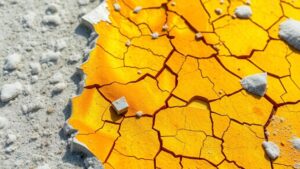How to Recover Gold From Sulfide Ore Using Roasting and Oxidation Methods
How to Recover Gold From Sulfide Ore Using Roasting and Oxidation Methods
Gold recovery from sulfide ore is a significant challenge in metallurgy due to the complex nature of sulfide minerals, which often encapsulate gold particles. The processes of roasting and oxidation play crucial roles in liberating gold from these refractory ores. This article will provide a comprehensive overview of these methods, highlighting their application, advantages, and steps involved.
Understanding Sulfide Ores
Sulfide ores are minerals containing sulfur combined with a metal. Gold often exists in these ores alongside other sulfides, such as pyrite (FeS2) and arsenopyrite (FeAsS). These compounds must be altered to facilitate the extraction of gold, usually through thermal and chemical processes.
The Roasting Process
Roasting involves heating sulfide ores in the presence of oxygen, which transforms the sulfides into oxides. This is a critical step in breaking down the mineral matrix that traps gold. primary reactions in roasting include:
- Oxidation of sulfides to oxides: 2FeS2 + 7O2 → 2Fe2O3 + 4SO2
- Decomposition of other sulfur compounds: 4FeS + 7O2 → 2Fe2O3 + 4SO2
Through these reactions, sulfur dioxide (SO2) gas is produced, which can also be captured for sulfuric acid production. Roasting not only liberates gold but also facilitates its subsequent recovery using cyanide leaching or other extraction methods.
Oxidation Methods
Following roasting, oxidation techniques further enhance the extraction of gold. Oxidation can occur through various methods, including:
- Cyanidation
- Chlorination
Cyanidation
Cyanidation is one of the most widely used methods for recovering gold from roasted ores. Here, a dilute solution of sodium cyanide (NaCN) is employed to dissolve gold from the roasted material:
- 4Au + 8NaCN + O2 + 2H2O → 4Na[Au(CN)2] + 4NaOH
Heap leaching and tank leaching are common cyanidation techniques, with examples seen in large-scale gold extraction operations like Barrick Gold’s Veladero mine in Argentina.
Chlorination
Chlorination serves as an alternative to cyanidation and is particularly useful in treating ores that are susceptible to cyanide inhibition. In this method, chlorine gas (Cl2) is introduced, reacting with gold to form gold chloride (AuCl3):
- Au + 3Cl2 → AuCl3
This method is effective in lower-pH environments and is typically used in conjunction with a leaching solution to extract gold from the matrix.
Case Studies and Real-World Applications
Multiple case studies highlight the effectiveness of roasting and oxidation in gold recovery. The Pontardawe smelting works in Wales implemented roasting as part of their gold recovery processes and managed to increase their gold yield significantly. Also, Newmont Mining Corporation’s Carlin Trend operation in Nevada employs both roasting and cyanidation to recover gold from complex sulfide ores, successfully processing millions of tons of ore each year with high recovery rates.
Challenges and Considerations
While roasting and oxidation offer effective methods for gold extraction from sulfide ores, they come with challenges such as:
- Emission of toxic gases: Proper environmental controls are necessary to manage SO2 and other by-products.
- Gold encapsulation: In some cases, gold may remain entangled within the mineral structure, requiring advanced techniques.
- Cost factors: The process can be economically burdensome, especially for smaller operations.
Adopting appropriate technologies and continuous research into leaching alternatives can mitigate some of these challenges.
Actionable Takeaways
For operators and researchers engaged in gold recovery from sulfide ores, key takeaways include:
- Employ roasting to effectively oxidize sulfides and liberate gold.
- Use cyanidation or chlorination based on ore characteristics.
- Use environmental controls to mitigate toxic emissions.
- Invest in ongoing process optimization and research to embrace new recovery technologies.
Through the application of these methods and considerations, gold extraction from sulfide ores can be more efficient, sustainable, and economically viable for the mining industry.
